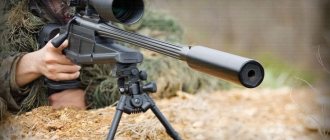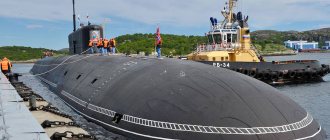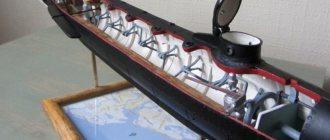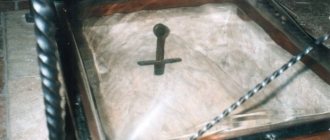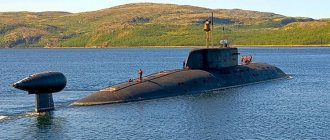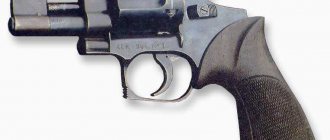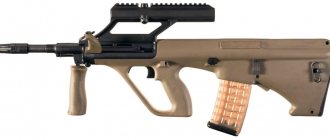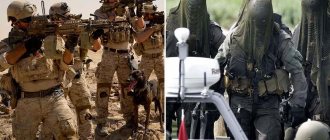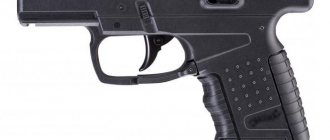Submarines, and especially nuclear ones, have become the personification of technological progress: it is on ships for the covert destruction of cities and continents that the most modern developments first appear.
Teflon, software and computing systems, compact nuclear reactors and small-sized rockets. The list could go on endlessly if all the information were available to the masses. However, some things can be found on the Internet.
But much more interesting than individual details is the very existence of ships for the earth’s space and ocean. The spaceships that humanity has been able to master are no less amazing than the fantastic ships from science fiction.
See for yourself: these self-propelled skyscrapers in composite scales, ready to destroy humanity, reach the very bottom, do not enter ports for years and are ready to surprise with their very existence.
Did you know about these?
Project 941 “Shark” underwater skyscraper-catamaran
Six of the world's largest submarines, known in the media as Typhoon, were produced by the Rubin Central Design Bureau from 1981 to 1989, but only one remained in service. The “nine-story submarine” turned out to be too expensive.
The most armed submarine of the eighties is also one of the quietest, despite its length of 173 meters and height of 23 meters (a 9-story building is “only” 25-30 meters).
Outside, the “Shark” is a single ship, but inside it is a catamaran: 2 durable titanium hulls inside a lightweight one ensured the reliability of the structure and the placement of 20 salvo-launched ballistic missiles, which accounted for 200 nuclear warheads.
Reactors and torpedo tubes are also duplicated in their own isolated compartments. Despite its size, the Sharks have record buoyancy (40%), so it easily breaks Arctic ice up to 2.5 meters.
This nuclear submarine is also distinguished by its comfortable accommodation: sailors sail in the last remaining afloat TK-208, the Dmitry Donskoy, for up to six months without a break, calling it the “floating Hilton.”
History of creation
Outstanding Soviet designer S.N. Kovalev
The development of Project 941 was entrusted to the team of the Leningrad TsKBMT Rubin, which was led by the outstanding Soviet designer Sergei Nikitovich Kovalev for several decades in a row. The construction of the boats was carried out at the Sevmash enterprise in Severodvinsk. In all respects, it was one of the most ambitious Soviet military projects, still stunning in its scale.
Typhoon on the stocks of the Sevmash plant
“Akula” owes its second name - “Typhoon” to the General Secretary of the CPSU Central Committee L. I. Brezhnev. This is how he presented it to the delegates of the next party congress and to the rest of the world in 1981, which fully corresponded to its all-destructive potential.
Ohio-class boats armed to the teeth
The most heavily armed submarine in the world carries 24 Trident 2 ballistic missile launch vehicles. Even the Sharks have fewer, because they carry carriers similar to those on the ground. Ohio has compact ones for submarines.
Instead, several boats of this class received ammunition of 154 Tomahawk cruise missiles, which is enough for an entire local war. However, the warheads of one Ohio missile would be enough to completely wipe out a small country.
Surprisingly, this colossus sounds “only” 102 dB, that is, slightly louder than thunder. For an underwater vessel, these are mere trifles, which are hardly recognizable at the Ohio's maximum dive of 550 meters.
Created simultaneously with the Akula, the Ohio turned out to be much more promising, cheaper and more multifunctional. Apparently, this is the only submarine missile carrier that can launch missiles, torpedoes, combat swimmers, and deep-sea vehicles.
There are persistent rumors that one or two boats of this type have been converted into underwater transports for transporting especially important cargo. Which ordinary troops and border services will never find or recognize.
The silent colossus of Project 955 "Borey"
The most modern Russian submarine, armed with 16 sensational Bulava missiles, hardly seems very interesting at first glance. But these boats replaced the Project 941 boats, receiving their best qualities “cheaply”.
Instead of multi-blade propellers, usual for nuclear-powered ships, the Boreys received water-jet propulsors, which made their noise extremely low: according to estimates, it is 5 times lower than the “quiest” Shchuka-B boats.
Water cannons are supported by a body divided into separate compartments, interconnected by shock-absorbing gaskets. Rubber coating is also used for the surface of the boat itself.
This probably makes the submarine's underwater sound comparable in volume to a school of fish. Together with special low-magnetic materials, this approach made Borey-type boats “stealth underwater world”, invisible to most observers.
It is not surprising that The National Interest magazine included the Project 955 nuclear submarine in the TOP 5 of the deadliest and most powerful submarines in the world, capable of completely destroying all of humanity in a matter of minutes.
Characteristics
The underwater speed of the main competitors was the same - 25 knots (just over 43 km/h). The Soviet nuclear submarine could remain on duty autonomously for six months, diving to a depth of 400 meters and having an additional 100 meters in reserve.
| Comparative data on modern SN RPLs | ||||||
| Project 941 | Ohio | Project 667BDRM | Vanguard | Triomphant | Project 955 | |
| A country | Russia | USA | Russia | Great Britain | France | Russia |
| Years of construction | 1976-1989 | 1976-1997 | 1981-1992 | 1986-2001 | 1989-2009 | 1996-present |
| Built | 6 | 18 | 7 | 4 | 4 | 2 |
| Displacement, t surface underwater | 23200 48000 | 16746 18750 | 11740 18200 | 15900 | 12640 14335 | 14720 24000 |
| Number of missiles | 20 R-39 | 24 Trident | 16 R-29RMU2 | 16 Trident | 16 M45 | 16 Mace |
| Throwing weight, kg | 2550 | 2800 | 2800 | 2800 | n.d. | 1150 |
| Range, km | 8250 | 7400-11000 | 8300-11547 | 7400-11000 | 6000 | 8000 |
To propel this monster, it was equipped with two 190-megawatt nuclear reactors, which drove two turbines with a power of about 50 thousand hp. The boat moved thanks to two 7-bladed propellers with a diameter of more than 5.5 meters.
The “combat vehicle crew” consisted of 160 people, more than a third of whom were officers. The creators of the “Shark” showed truly fatherly concern for the living conditions of the crew. For officers, 2- and 4-berth cabins were provided. Sailors and foremen were located in small cubicles with washbasins and televisions. All living areas were supplied with air conditioning. In their free time off duty, crew members could visit the pool, sauna, gym or relax in the “living” corner.
“Deep Sea Tragedy” K-278 “Komsomolets”
Submarines of Project 685 “Plavnik” were created as underwater hunters for enemy nuclear submarines, and therefore were superior to all existing analogues in both the USA and the USSR.
To develop them, a colossal testing complex was built in Severodvinsk with pressure chambers simulating a wide variety of loads at great depths. The dimensions of the complex allow us to assert that nothing like it existed either before or since.
Effective scientific work made it possible to build a boat on which, on August 4, 1985, an absolute world record for diving depth of 1027 meters and a record for the depth of underwater torpedo firing of 800 meters were set. At such a depth, submarines are unattainable by means of detection and armament of other ships to this day.
Unfortunately, after the third voyage, the boat sank, remaining in memory as one of the most tragic maritime disasters: despite the presence of an autonomous rescue capsule (through which even entry was made), 42 of the 69 crew members were killed.
To prevent radioactive contamination, it was necessary to pump polymer with chitin into the body (another unique technique). It is also planned to raise the remains of the boat. It lies at a depth of 1650 meters, so even research into its location is a record.
Acoustics: from noise direction finding to low-frequency illumination
Ships could detect submarines using the first sonars (with an operating frequency of tens of kHz) even before World War II. But this required the anti-submarine ship to be very close to the boat.
A definite breakthrough in the late 50s and early 60s was “low-frequency sonars” with an operating frequency of the order of several KHz, the detection range of which, under favorable hydrological conditions, could reach several tens of kilometers.
In the case of nuclear submarines secretly leaving their bases and moving along unpredictable courses to the combat service area, which also evade contact with surface ships, this was ineffective.
But in this case, a breakthrough was passive noise direction finding in the low frequency range (down to infrasound) - acoustic waves from a noisy submarine diverged over enormous distances, especially when it was close to the axis of the underwater sound channel.
The record detection range of a nuclear submarine based on its own noise using a bottom hydrophone exceeds 6,000 kilometers. But an important point is that here we are talking about the submarine target’s own unmasking acoustic signs; it was they that were detected passively.
For many years, the basis of the US Navy's anti-submarine warfare system was the “sound surveillance system” SOSUS (SOund SUrveillance System).
Approximate coverage of the SOSUS system based on open data in the Western press. Points - underwater stations, zone in a horizontal stripe - coverage by base patrol aircraft with Orion aircraft, zone in a vertical stripe - theoretical limits of detection range of a submarine system
It must be said that the USSR Navy slightly “played along” with the Americans, without meaning to - not knowing about the capabilities of their detection systems, the command set submarines leaving for combat service in the Atlantic and Pacific Oceans with too high speeds during the transition, which, accordingly, gave rise to very high level of discrete components of underwater noise (DS UPSH) of our submarines.
As a result, base patrol aircraft (BPA) were sent to the area where our submarine (tracked by SOSUS) was located, which clarified contact or only then transferred contact to either the American submarine or surface forces. NATO and Japanese submarines (including US Navy submarines) operated in the waters adjacent to the USSR, not covered by the SOSUS detection zone. And this is not episodic (as in the USSR Navy). This was precisely the permanent system.
However, sometimes the surface forces worked on their own.
Below is an example from the combat service of the K-258 SSBN in the Pacific Ocean in 1985 - it is clear that the American surface combat groups (SBG, the translation of the American term Surface Action Group - SAG) came out exactly to the “undetectable” boat and gave it the heat “to the fullest” . Fragment:
Then it’s easier... Raised on a tip, the US SOSUS BPA (base patrol aircraft of the US west coast) takes us for F...?! And we find out THIS at the most inopportune moment, when our “Yalda” (the head part of the lifting-mast device) ROS “Saiga” at KU = 40 deg.pr.b... Urgent dive... The mechanics do not have time to bring the YALDA to its original position... We dive... YALDA... PULLED UP... How the shaft lid was closed, ... even the mechanics didn’t understand!!! Well, oh well... No such luck, on the second day we break away from the adversary, diving under one vehicle, and then changing it to another oncoming one, spanking in reverse direction. WE took a deep breath of shut-off air... And we decided to surface, fill the high pressure air through the PVP (air intake under water), and at the same time look around... through the periscope, ... how there was an assistant, my former navigator, from the combat room to the navigation room via intercom. 3rd rank Alexander Sholokhov asks a follow-up question: “...Navigator, how far is it to the shore?” ...I, without hesitation: “400 miles to Hawaii, and 600 miles to the US PO.” Question number 2: “...What is a VESSEL doing in the middle of the ocean, occupied with towing and limited in its ability to maneuver?”
...Thus began a 28-day struggle, read “war”, rpkSN k-258 with two KPUGs (8 NK), equipped with AN/BQQ-14(-17) sonar in support of ship-based helicopters, UUVs and support vessels. This was the FIRST use by the US Navy of the TACTASS system at the Pacific Fleet during the “operation to oust the USSR Navy RPKSN from their combat patrol areas.”
The rest is here
.
It can be seen that SOSUS was sufficiently effective for targeting the UUV target boat. In a real war, this would all end there. But it was a cold war. And in the end, the Americans let the surface ships “frolic.”
However, there were antidotes to those old systems. By the end of the 70s, the Americans were searching primarily for discrete components of the UPS. The latter collectively formed the so-called “hydroacoustic portrait” (HAP) - a characteristic set of discrete frequencies characteristic of each specific boat. The GAP was unique and each boat had its own. This made it possible not only to determine the type (design) of the boat, but also to understand which of them specifically came under surveillance.
Accordingly, the solution was, firstly, to reduce the noise by moving in small optimal moves, and most importantly, by camouflaging in the near-surface layers. And secondly, change the “portrait” of the boat before an important operation, working with mechanisms that give characteristic “discretions”. As a result, the computer analyzing the spectrum of the acoustic background of the World Ocean did not extract characteristic sets of frequencies from it. And he could not notify about the presence of the boat, although there were man-made “discrete” signals in the spectrum.
This was done, alas, by individual proactive commanders, and not by the “system.”
This is how K-492 Dudko was able to secretly penetrate the Bay of Juan de Fuca, near the Bangor naval base, in 1982.
The persistent work of Soviet engineers led to the fact that the UPS of submarines decreased significantly. In the first half of the 80s, it became clear to the Americans that the days when it was possible to rely only on noise direction finding in detection were numbered. Soviet boats became quieter, and Soviet commanders' knowledge of the enemy's capabilities grew. There were, of course, failures like Atrina. But there were also operations that made our future “partners” feel hot. Maybe someday they will tell us about them.
But one way or another, the United States needed to respond to future challenges, when the noise level of Soviet submarines would drop almost to the natural background of the ocean, and there would be no “discretion”.
The answer was the use of a principle such as low-frequency illumination in underwater lighting systems (here, the technical groundwork of the US Navy for multi-position systems, optimally distributed in the search area, for example, the sonar of a surface ship and the RSLA of a helicopter, became extremely useful).
1990 “The process has begun.”
First, about the physics of the process.
As you know, the lower the frequency (longer the wavelength), the further the signal propagates and the less it attenuates. In the case of active sonar, the factor of internal reflections from submarine design elements begins to play a large role (which is especially acute for double-hull submarines, typical of the Russian Navy).
An important point - noise is absolutely not important - a low-frequency wave will “illuminate” even an acoustically “dead” object.
What is actually required of a submarine hunter?
Lower the low-frequency emitter into the water, “give a wave,” and then receive the waves reflected from different objects with your antenna. Taking into account the optimal low-frequency range, it is necessary to use a GPBA - a flexible extended acoustic antenna - as the most effective antenna for such a scheme.
It was this method of detecting submarines that became the main one in the US Navy and in all countries allied to the Americans.
The use of special hydroacoustic reconnaissance vessels with very powerful emitters ensures the range of “illumination” from the Norwegian Sea of almost the entire Barents Sea (with the reception of the reflected signal from the SAC PLA or RGAB aviation), and the USSR Navy first encountered this back in the mid-80s (SGAR with The NCI was examined by the lead “barracuda” with Vice Admiral Chernov, which was going on a deep-sea dive into the Norwegian Sea).
A single surface ship with a gas-propelled gun and a low-frequency emitter (of lower power), as well as a pair of anti-submarine helicopters, is capable of completely “illuminating” a strip many tens of kilometers wide. And if there is a boat in it, it will be immediately detected at any noise level.
On the issue of detection range and “illumination” of modern LF BUGAS
But this is its own GPBA. The “illuminated boat” gives a secondary wave in ALL directions - and if on the side opposite to the hunter ship there is some kind of tactical unit capable of detecting the reflected wave (submarine or helicopter), then the width of the band in which any underwater target is detected is from tens of kilometers turns into hundreds. The worst thing is that on the opposite side there may simply be a buoy dropped from a patrol aircraft.
Shoot anti-ship missiles at the “illumination” source? What if it’s just a dropped buoy or a helicopter?
A clear example of the compactness of modern LF OGAS and their ranges in favorable conditions (the operating scale reaches 60 miles - 111 km!)
You can read about the details of this search method in the article “Anti-submarine defense: ships against submarines. Hydroacoustics"
in the section
“Fourth generation.
After the Cold War" . It covers the issue from a technical point of view, but ranges are important to us now.
To understand how much NATO has advanced, it is worth giving the following example. At the end of the 80s, the USSR was able to create GPBA applicable on warships. Using such an antenna, the Centaur hydroacoustic complex was created, which was installed experimentally on the experimental vessel of the Northern Fleet GS-31. The results are described in the article “Anti-submarine defense: ships against submarines. Hydroacoustics". We will only voice here that the detection range of quiet Western submarines, including the quiet diesel-electric Norwegian Ulas, was hundreds of kilometers.
But this complex did not have “backlight”, just a good antenna and computing potential. The systems that any English frigate has today are significantly superior to the one carried by the GS-31. Both in terms of the presence of a radiator, and in terms of signal processing, the antenna is better there.
An example of the operation of a single ship is shown in the video. First, the English frigate lowers the GPBA into the water, by the way, at a very good speed. Then a lowered low-frequency emitter is released with automatic adjustment of the immersion depth. With the help of this equipment, the ship “takes contact” - a submarine, judging by the radio exchange, with a taking off helicopter, 12 miles (22 kilometers) from the ship.
The GPBA definitely doesn’t give a place and apparently the best anti-submarine helicopter in the world, the Merlin, is sent there. The crew decides to carry out an additional search for the target using their lowered sonar, also low-frequency. The power of its illumination is low, and the target boat does not try to evade - it simply does not know that it is being “illuminated”. And the helicopter pilots, having determined the elements of the target’s movement (course, speed, depth) and developed data for aiming, attack the boat with a torpedo (the Merlin can have up to four of them).
But the most important thing is that they know how to turn any of their tactical units into an element of a multi-positional system, each part of which works together with all the others.
The principle of its operation is shown in the figure.
This is all part of the problem, however.
Los Angeles-class submarine dolphin
The Los Angeles multi-purpose nuclear submarines are familiar to anyone who watches the news even a little or is interested in world events: they became the “heroes” of most local conflicts in the Middle East, launching Tomahawk cruise missiles against Iraq, Libya, and Syria.
The US Navy received a record number of these particular boats: 62 units for other projects turned out to be an unattainable figure. In fact, Los Angeles became the founder of a new class of multi-purpose nuclear boats in the modern sense of the term.
They are used in the fight against submarines and enemy surface ships, conducting reconnaissance operations, special operations, transferring special forces, launching high-precision strikes against ground targets, mining, and search and rescue operations.
To do this, she can develop 64 kilometers per hour under water, which is a record among large-scale boats. And their reactors are recharged once every 42 years, so the Los Angeles is almost eternal by the standards of the submarine fleet.
“Goldfish” of project 661 “Anchar”
The first submarine with an all-titanium hull was K-162/222 “Golden Fish,” which was sent into operation in 1969 and only cut into scrap metal in 2015.
In order to build this ultra-strong colossus, invisible to magnetic equipment, engineers had to invent a previously impossible method of welding titanium and build colossal chambers filled with inert gas.
People had the hardest time during construction: never before, and never since, have they had to work in an unbreathable atmosphere for such a time and with such quality.
Two reactors, a heavy-duty hull and hull geometry borrowed from nature allowed the Golden Fish to become the fastest submarine: during the passage across the Pacific Ocean, a record underwater speed of 44.74 knots (80.4 kilometers per hour) was achieved.
The record has still not been broken, although the boat was decommissioned in 1989. Not least because of the high cost of repairs and the prohibitive noise inside when reaching high speeds.
Table 4
*Built in three sub-series.
A larger series of nuclear submarines of 77 units was implemented only during the construction of domestic missile carriers, which, although different in TTX, are based on the same project 667A. ** Construction of the series is not completed. Submarines, time intervals are indicated by the timing of the laying of the lead submarine and the commissioning of the last in the series of submarines.
The level of development of ALL reached by the mid-90s is characterized by those given in table. 5 data for three American nuclear submarines in recent years of construction.
Project 949A Antey aircraft carrier killer
Project 949 was the pinnacle and end of the development of highly specialized submarines created to destroy the largest surface ships - aircraft carriers, protected not only by a mass of support vessels, but also by a large number of man-portable aircraft.
The engineers solved such a difficult problem perfectly. The distance of 3.5 meters between the light and durable hulls of the Anteev provides a significant reserve of buoyancy, up to 30%, and provides protection from underwater explosions. An accidental torpedo will not disable the boat.
Boats of this type carry 72 P-800 Oniks or 24 P-700 Granit anti-ship supersonic missiles. It is for them that the Zircon hypersonic missiles were designed, which have become the “horror of the oceans” against which there is no protection yet.
Even an aircraft carrier group can only intercept 1-5 Onyxes, which Project 949 boats are capable of launching in a salvo that is many times larger than this number. There is no need to even guess what will happen to the Zircons.
Another naval tragedy belongs to this class: the disaster of the K-141 Kursk nuclear submarine was empathized with by every resident of Russia, not only during the screening of the film of the same name.
Seawolf
The design of the submarine was first developed by the Americans using computer technology, and today some of its characteristics are unsurpassed. This makes the model high-tech, but also expensive. Seawolf is characterized by low noise, is armed with 8 torpedo tubes, 50 charges, capable of hitting targets on land, in water and on water at a long distance.
Arctic hunters of projects 945 "Barracuda"
The last all-titanium “aircraft carrier killers” of Soviet design, which over time were retrained into multi-purpose nuclear submarines, actively operating today in the Arctic.
It has an amazing hull strength, designed to emerge from under the ice in Arctic waters - in fact, the Barracuda and its “children” became underwater nuclear icebreakers.
A boat of this type, K-276 “Crab,” on February 11, 1992, in Russian territorial waters, collided with the American Los Angeles-class submarine Baton Rouge, after which the American boat had to be written off. And “Crab” continued to serve.
Very little is known about the boat—this is industry specific. The nuclear reactor is similar to that used on the Sharks and Anteys, the characteristics are similar, and the noise level is the same as on ultra-modern boats with water jets. That's all.
Nuclear submarine power plant: reactor, turbine and electric motor
Basic operating principle of a nuclear reactor
The main unit that distinguishes a nuclear boat from a diesel boat is the reactor. Depending on its type, the type of drive may vary.
In a typical nuclear reactor engine, cooled water is pressurized into the reactor vessel containing the nuclear fuel. The heated water leaves the reactor, turns into steam and rotates the turbine blades.
The turbine shaft is connected to the electric motor shaft through a gearbox for more efficient conversion of energy into electricity.
In turn, the electric motor shaft is connected to the propeller shaft using a clutch mechanism. At the same time, part of the electricity is stored in on-board batteries.
Nuclear submarine working compartment
The conversion of the energy of steam molecules into the kinetic energy of the blades leads to the condensation of steam back into water, which again enters the reactor.
Against this background, the number of nuclear submarine accidents looks interesting. In total, 8 submarines sank in the history of the nuclear fleet: 4 Soviet, 2 Russian, 2 American. Only one, USS Thresher (SSN-593) due to hull damage.
The infamous Kursk of Project 949A Antey became the most famous disaster of the Russian fleet and perhaps the only accident due to weapons. Others sank due to direct or indirect problems with the propulsion system.
Amazing "Losharik" for exploring the ocean depths
Nuclear deep-sea station of project 10831 “Kalitka”, known to the public as AS-12 or “Losharik”, is a Russian nuclear-powered deep-sea submarine for studying the seabed and carrying out special work.
“Losharik” is completely defenseless: there are no weapons. But she can dive to a depth of about 6000 meters, possibly more. Official sources in 2012 confirmed at least 2-3 kilometer dives carried out to study the Arctic shelf.
To achieve such depths, its body is assembled from several spherical compartments (the principle of a bathysphere is implemented) made of titanium, located inside an elongated lightweight body of a “classical” shape.
It is assumed that the 69-meter-long device is equipped with a manipulator complex, a load-lifting system, a hydroacoustic station, an optical system and small (uninhabited) drones. Possibly has wheels for driving along the bottom for completely invisible movement.
Thanks to its immersion depth and noiselessness, it is virtually invulnerable. But “Losharik” does not “go” over long distances: existing leaks indicate the use of the K-329 “Belgorod” nuclear submarine as a carrier boat.
Operating principle of the submarine
The submarine's submersion and ascent system includes ballast and auxiliary tanks, as well as connecting pipelines and fittings. The main element here is the main ballast tanks, by filling them with water the main buoyancy reserve of the submarine is extinguished. All tanks are included in the bow, stern and middle groups. They can be filled and purged one at a time or simultaneously.
The submarine has trim tanks necessary to compensate for the longitudinal displacement of cargo. The ballast between trim tanks is blown using compressed air or pumped using special pumps. Trimming is the name of the technique, the purpose of which is to “balance” the submerged submarine.
Nuclear submarines are divided into generations. The first (50th) is characterized by relatively high noise and imperfect hydroacoustic systems. The second generation was built in the 60s and 70s: the hull shape was optimized to increase speed. The boats of the third are larger, and they also have electronic warfare equipment. The fourth generation nuclear submarines are characterized by an unprecedented low noise level and advanced electronics. The appearance of the fifth generation boats is being worked out these days.
An important component of any submarine is the air system. Diving, surfacing, removing waste - all this is done using compressed air. The latter is stored under high pressure on board the submarine: this way it takes up less space and allows you to accumulate more energy. High-pressure air is in special cylinders: as a rule, its quantity is monitored by a senior mechanic. Compressed air reserves are replenished upon ascent. This is a long and labor-intensive procedure that requires special attention. To ensure that the crew of the boat has something to breathe, air regeneration units are installed on board the submarine, allowing them to obtain oxygen from seawater.
Underwater bases of deep-sea vehicles
No more is known about a number of submarines of the USSR and Russia than about the Losharik, which was first photographed quite by accident 27 years after its laying: these are submarines converted from serial nuclear submarines, designed to carry deep-sea vehicles.
Few such submarines are known:
- project 09774 KS-411 “Orenburg”, formerly boat of project 667A “Navaga”
- project 09786 BS-136 "Orenburg", converted from 667BDR "Squid"
- Project 1910/19100 “Sperm Whale” from the Project 675 submarine
- project 09787 BS-64 "Podmoskovye", built as a nuclear submarine of project 667BDRM "Dolphin"
All of them are deprived of weapons and supplemented with secret equipment, the purpose of which is not determined even by military experts.
Probably, the BS-136 and BS-64 are the main carrier of the Losharik and its upcoming unmanned replacement, the Harpsichord-2R-PM, and the KS-411 Orenburg is the drone of Project 18511 Halibut.
But the most secret ships keep their secrets securely.
American and Soviet shipbuilding school
The first nuclear submarine of the Soviet Union "Leninsky Komsomol"
The appearance of a reactor on board a submarine posed three tasks for the developers: to link the capabilities of the reactor with the capabilities of the boat, to protect the crew and to come up with new applications.
Already the first nuclear submarine of the USSR K-3 “Leninsky Komsomol” received a cigar-shaped hull with a minimal upper deck and a streamlined wheelhouse resembling the fin of a sea animal.
The hull of the American Nautilus is similar to its diesel predecessors: overseas colleagues changed the external design a little later, using the operating experience of the first nuclear-powered submarine.
Against this background, a clear division of nuclear submarine development paths emerged: American and Soviet.
The first US nuclear submarine USS Nautilus
By the time the Nautilus was launched, US engineers had a nuclear reactor ready, so they built a boat around the reactor. Proven reliability allowed the use of one main power plant, supplemented by diesel units.
The units of the factories of the Soviet Union were created in a hurry, so the K-3 was built with duplication of the power plant. The simultaneous design of the units and the vessel itself made it possible to “more elegantly” accommodate the crew and equipment.
This later led to a fundamental difference: US nuclear submarines always have one reactor. Russian and Soviet ones were built with either one or two reactors, depending on the size of the vessel and its purpose.
Why so few? I want more!
Data on nuclear submarines, even early projects, are classified in a number of areas. Modern boats even keep their secrets in ways we civilians never dreamed of.
However, if there is a strong desire, military sources are ready to share a variety of rumors. Some of them are true, some of them will turn out to be disinformation for foreign intelligence services.
And it is almost impossible to cover all the technical details in one material, moreover, by describing them in simple language. Or continue the topic?
But where to start? Tell us about records, technical achievements? Or maybe dedicate the next material to the history of Soviet computers, which first appeared on submarines?
We are waiting for your comments!
(
138 votes, overall rating: 4.80 out of 5)
